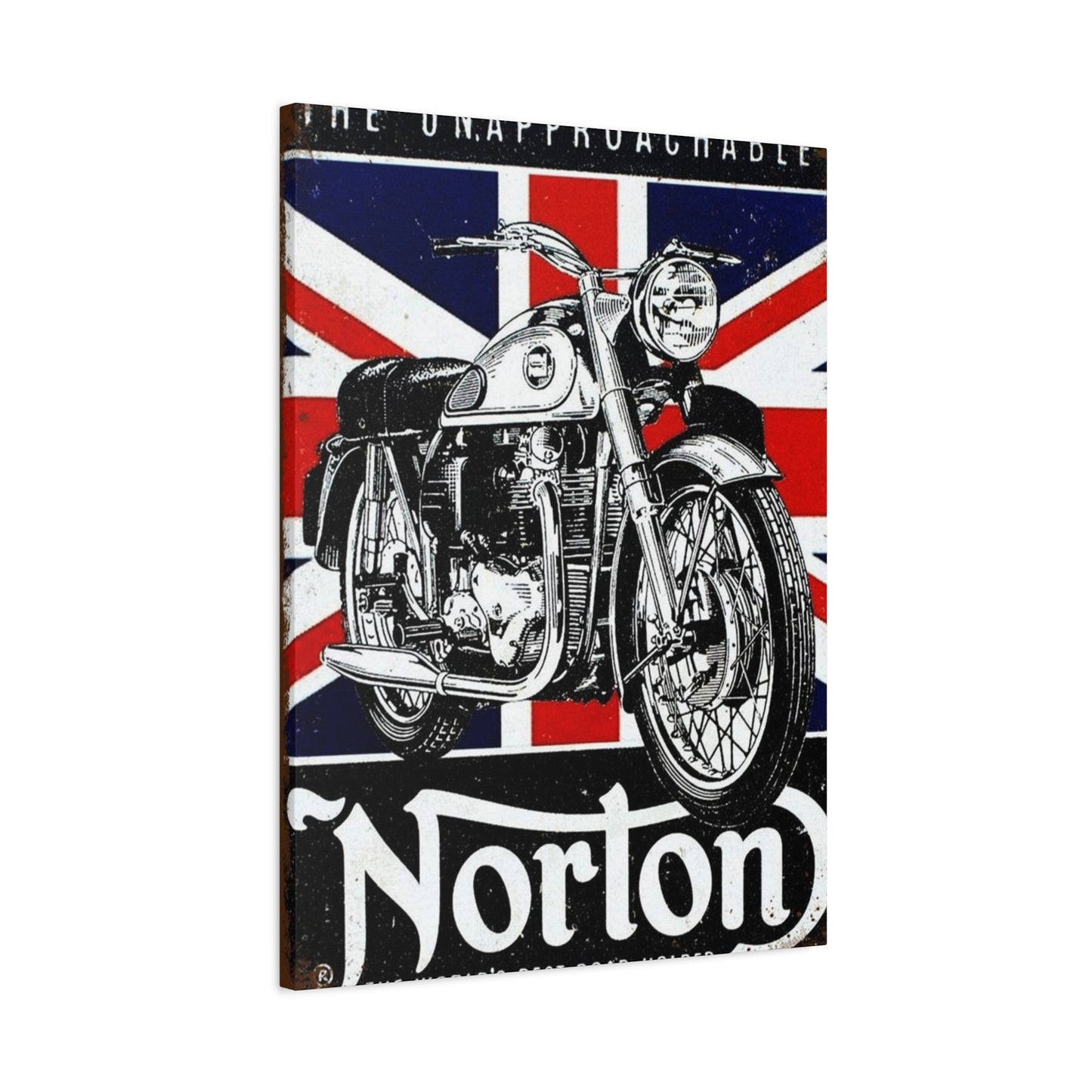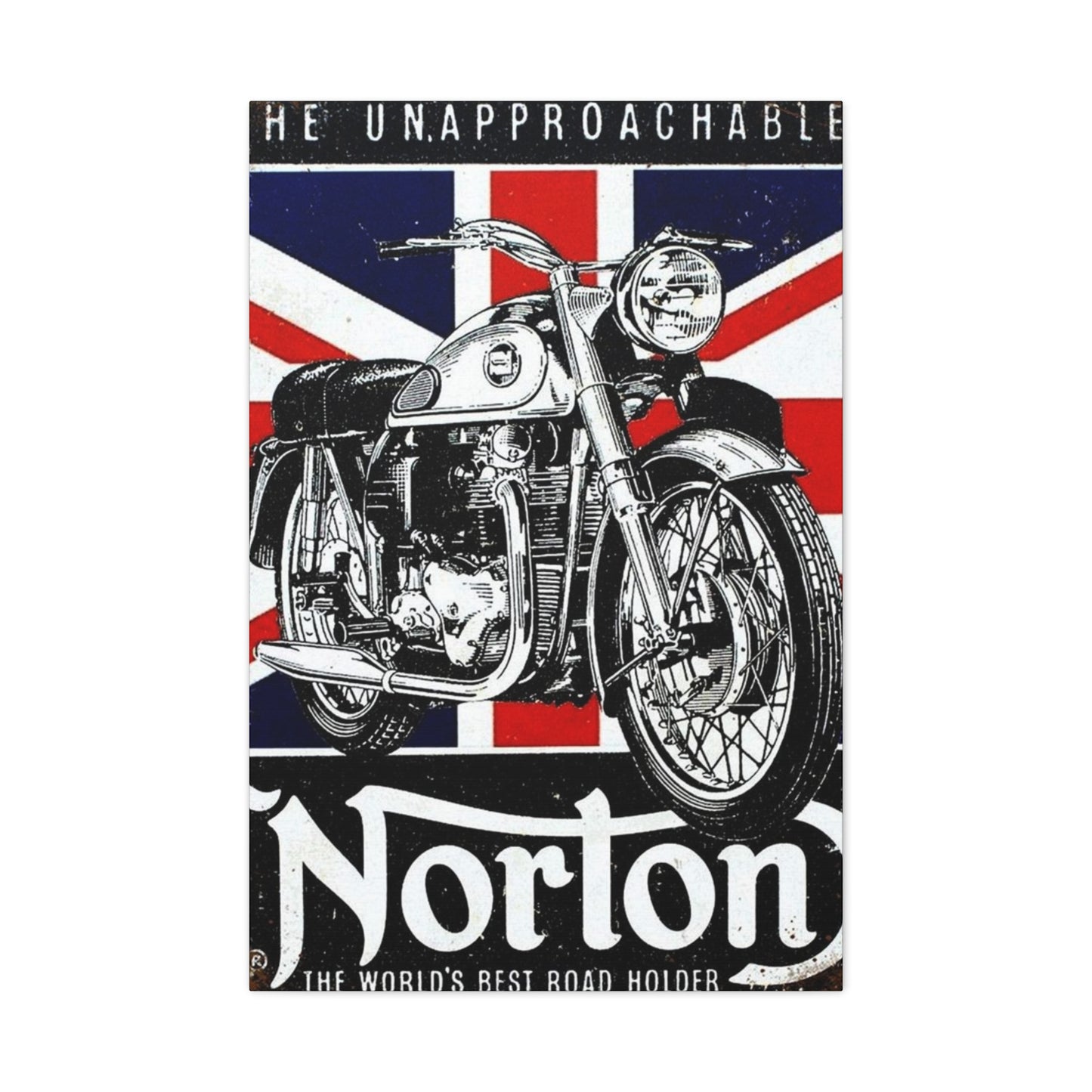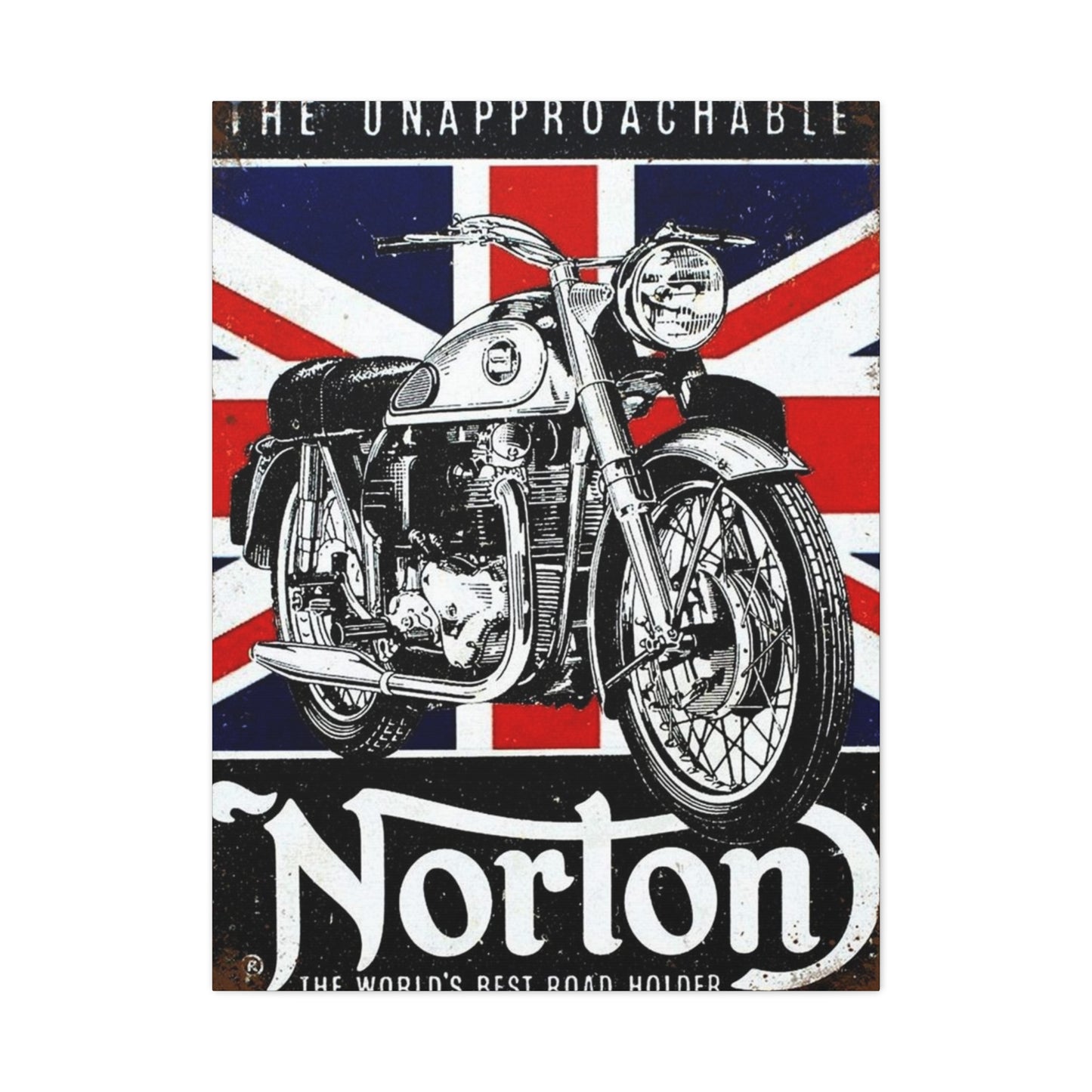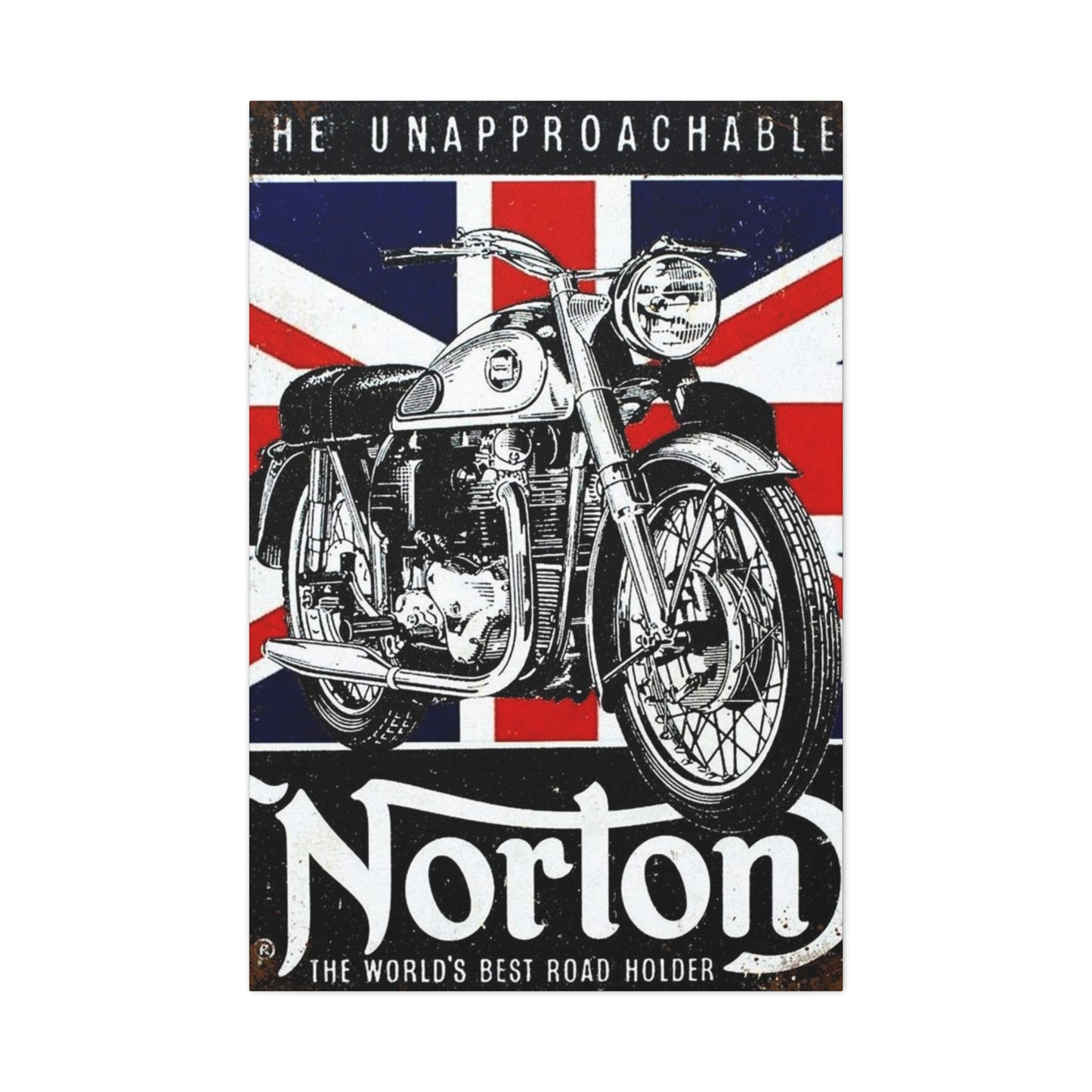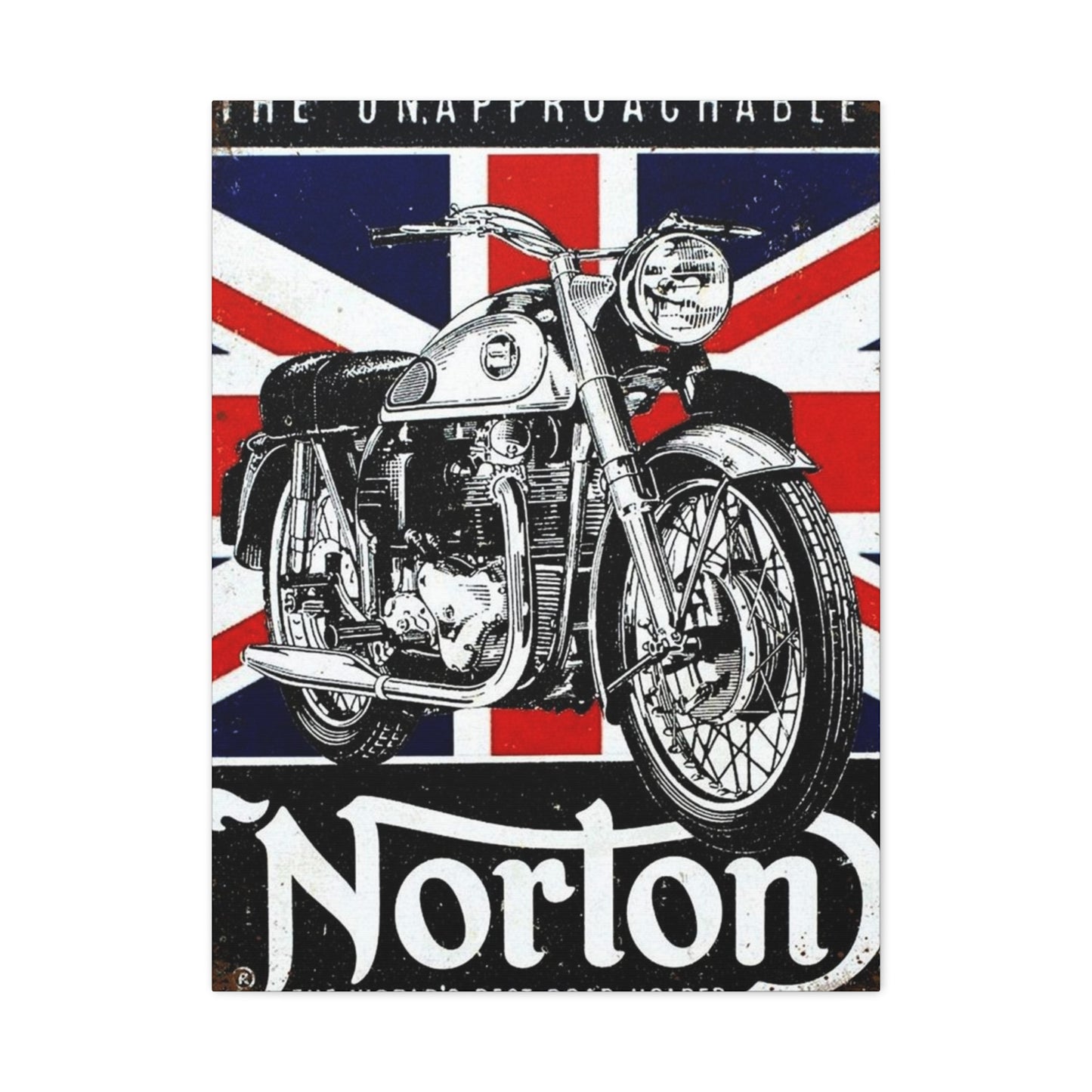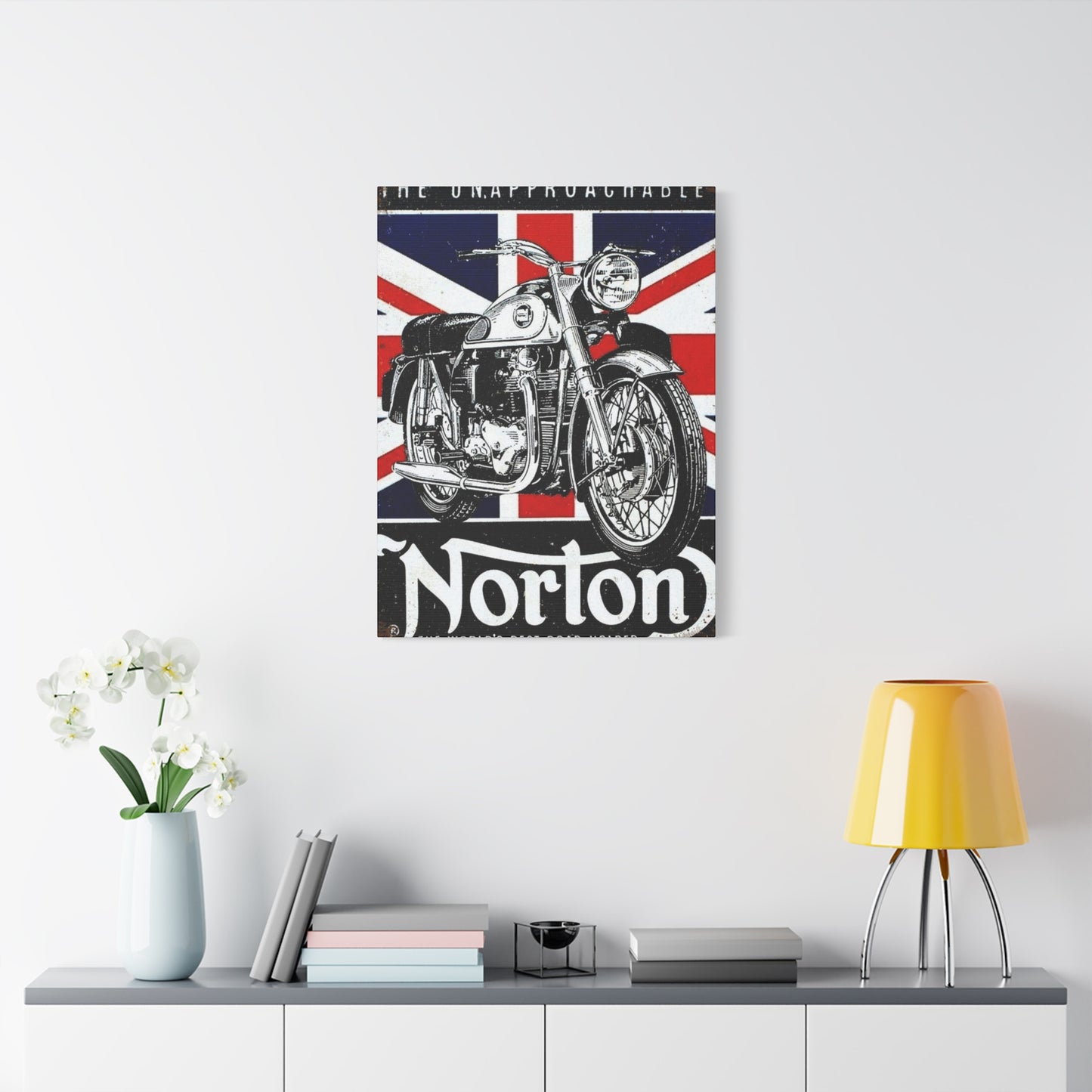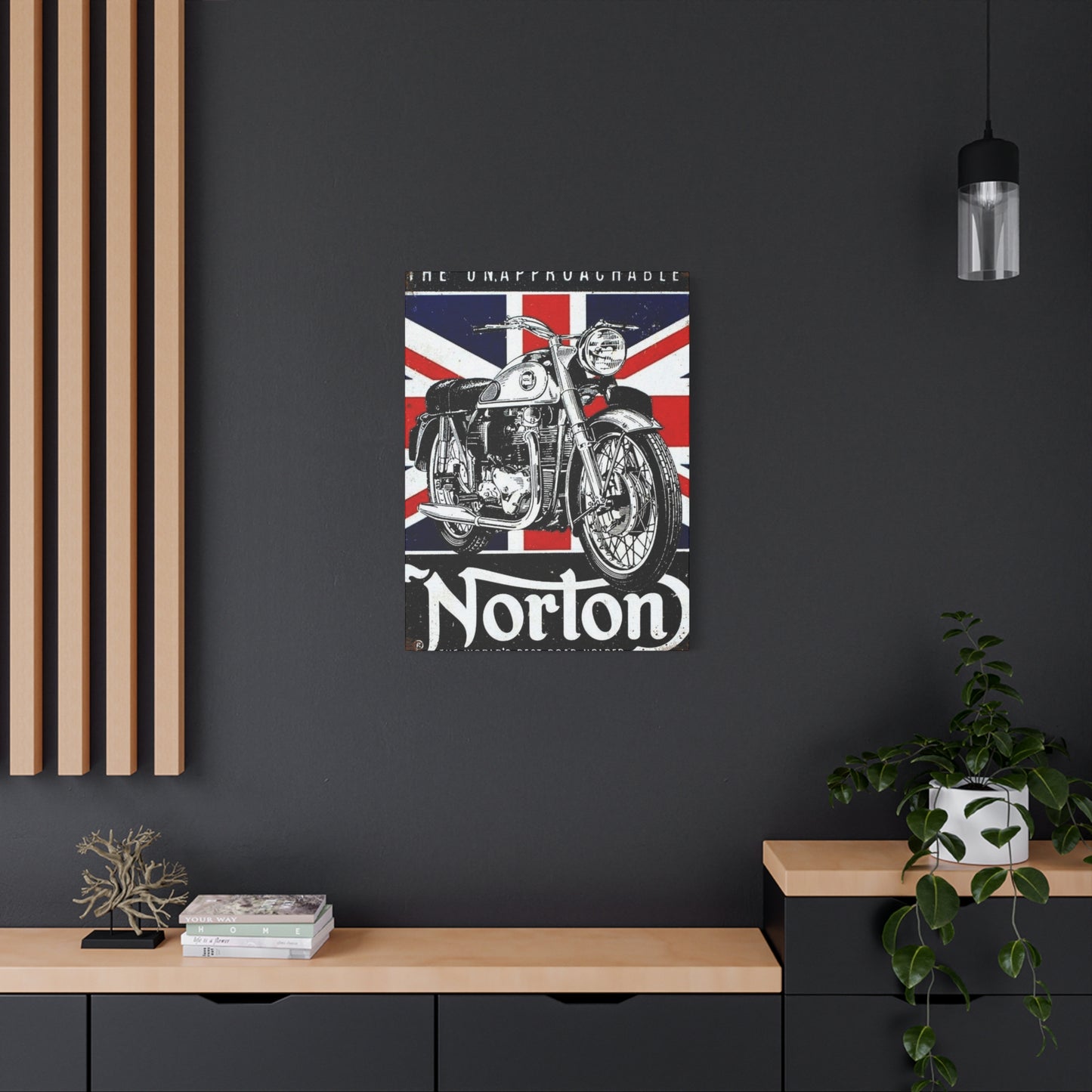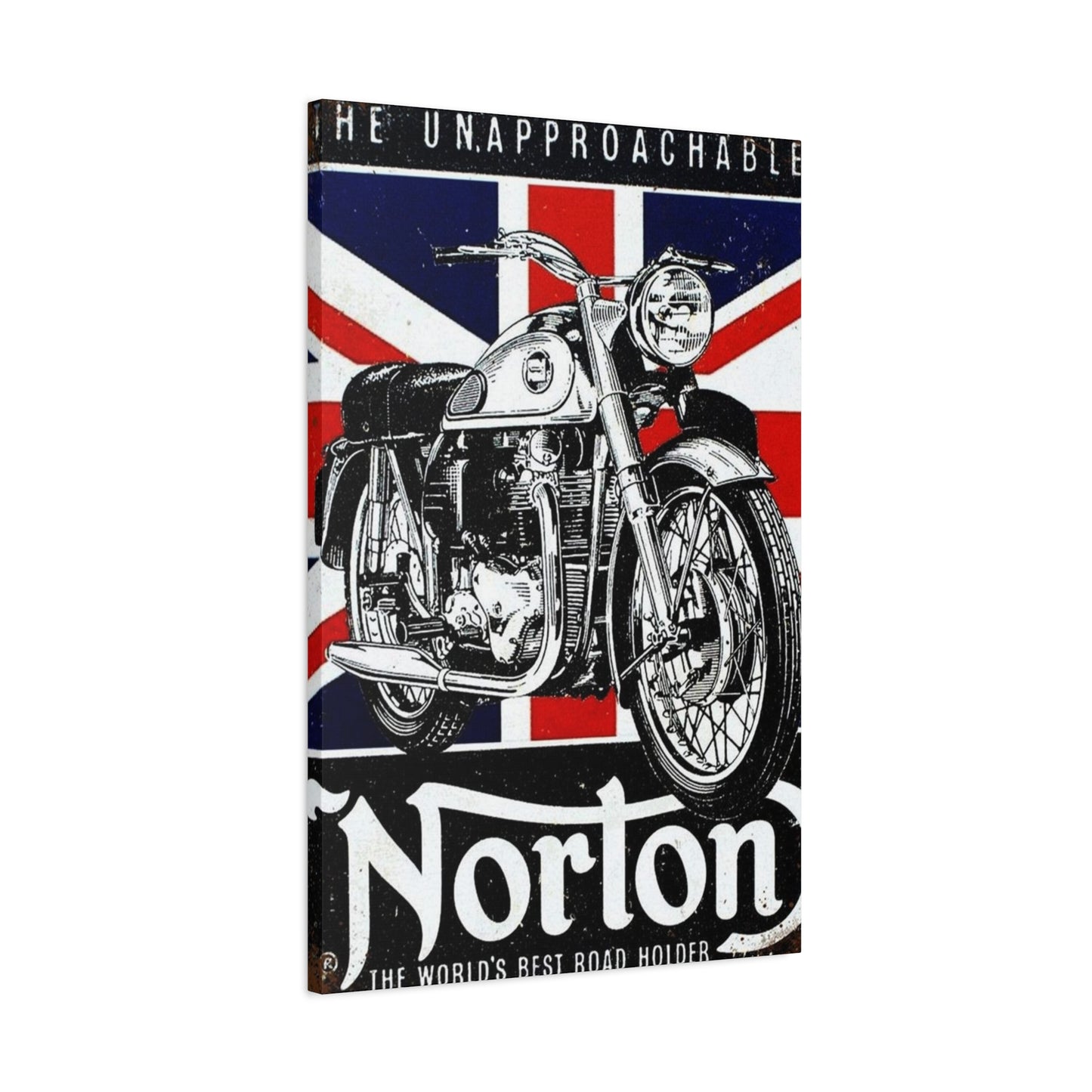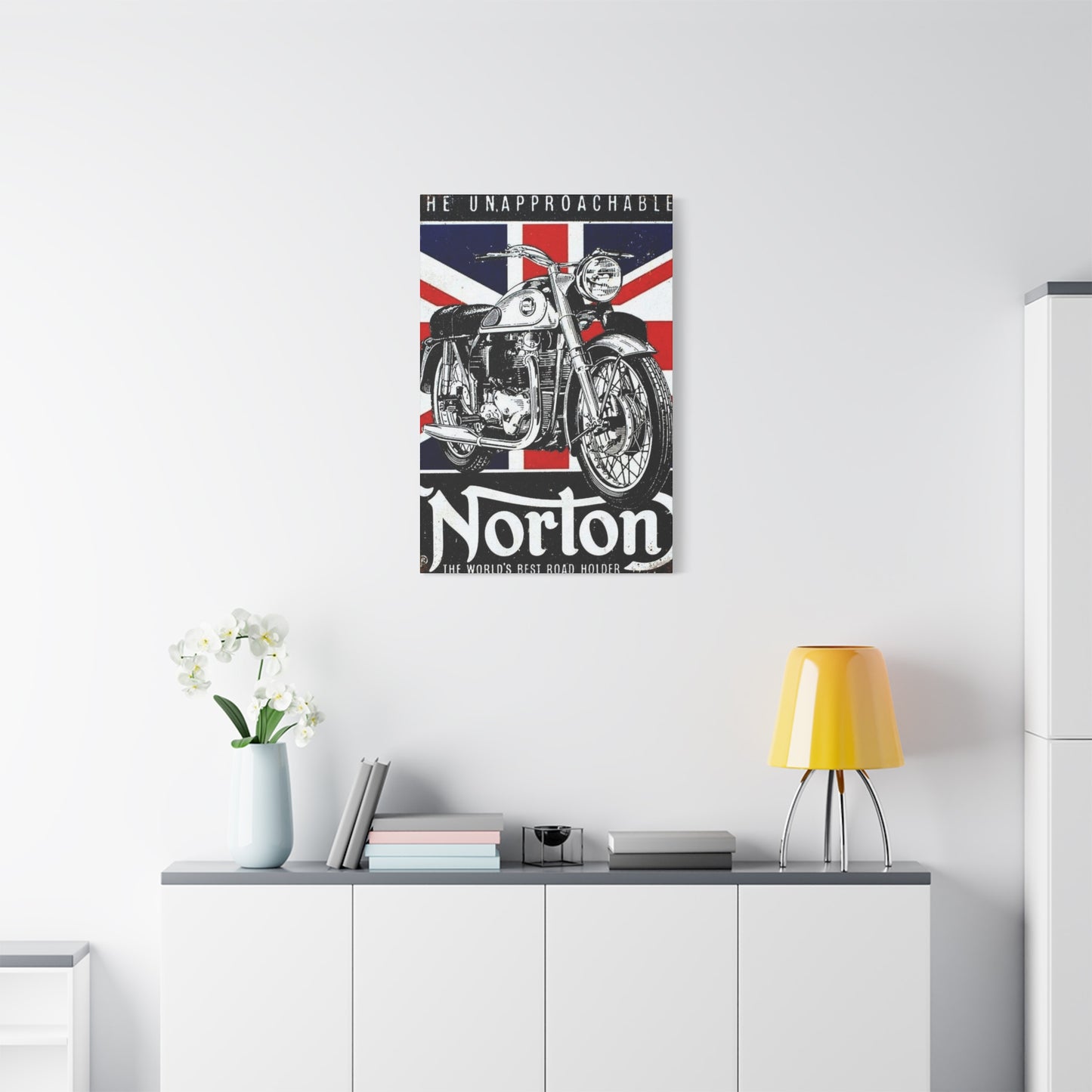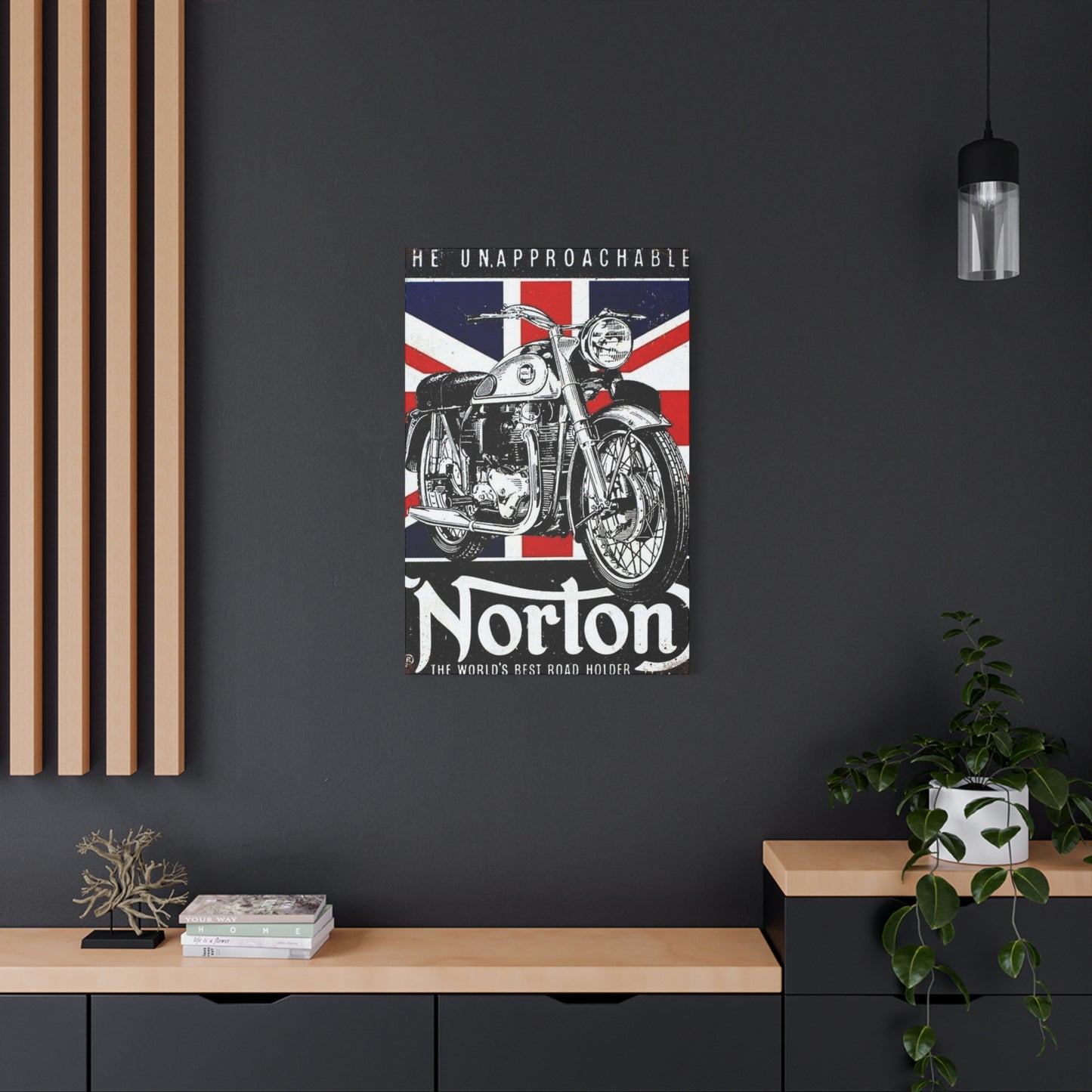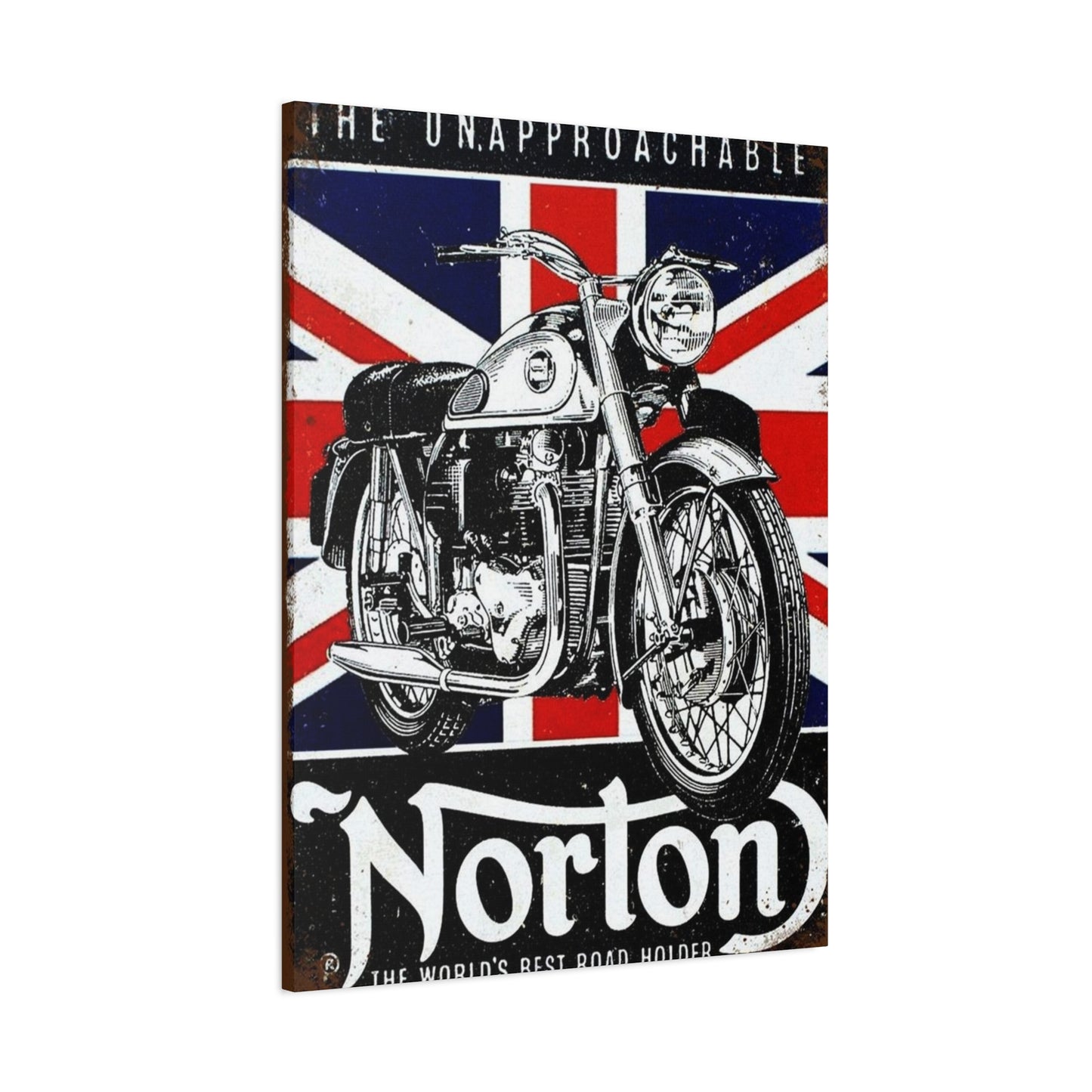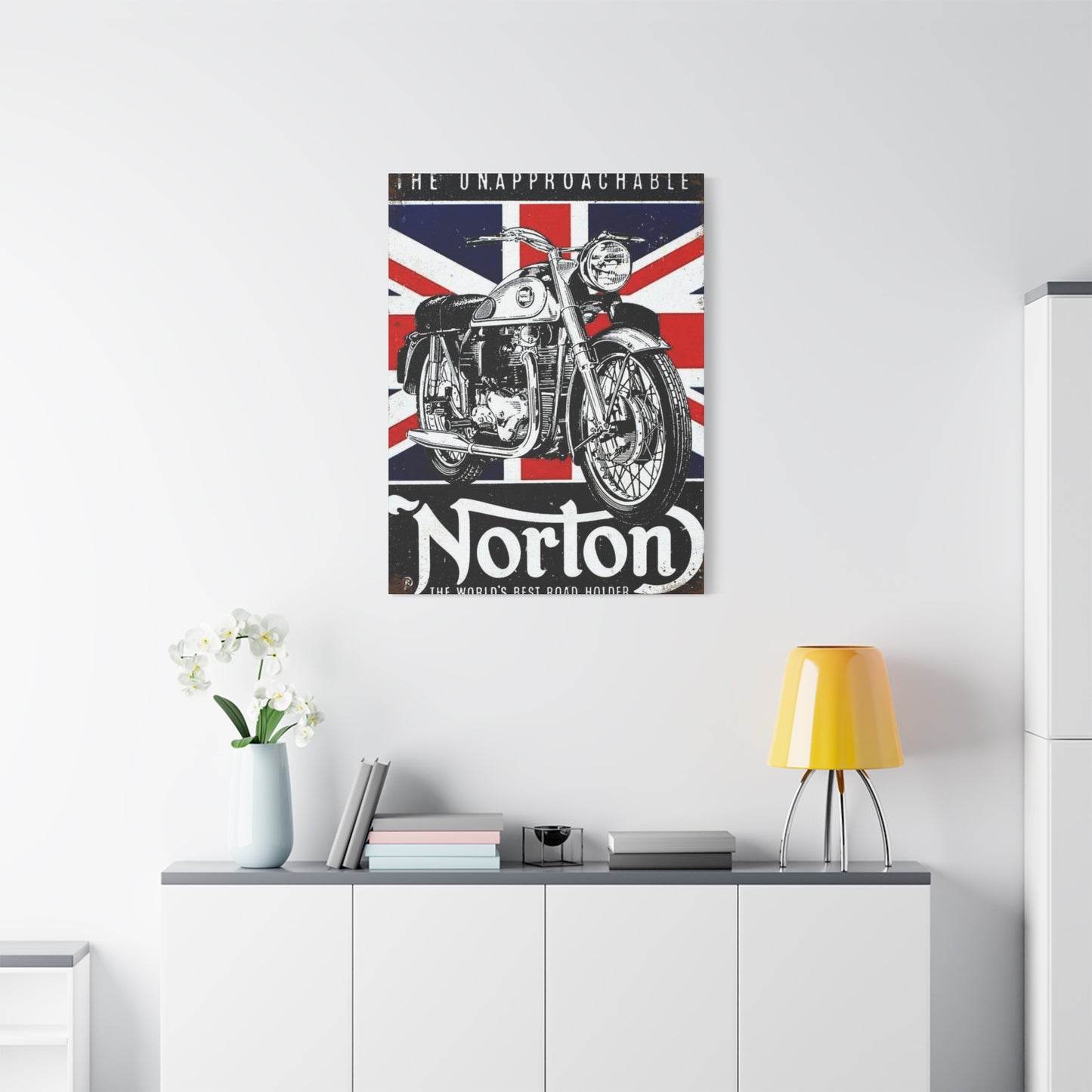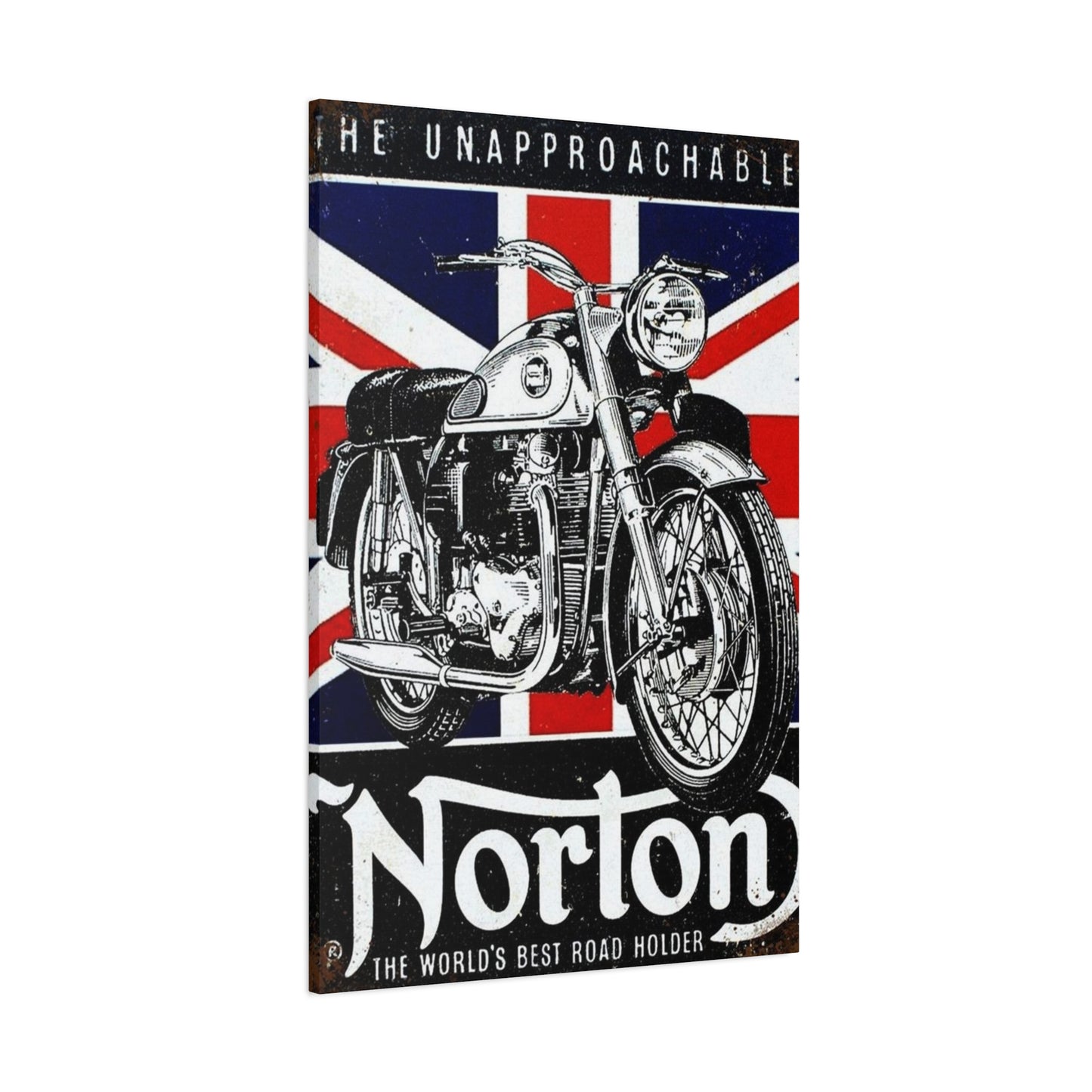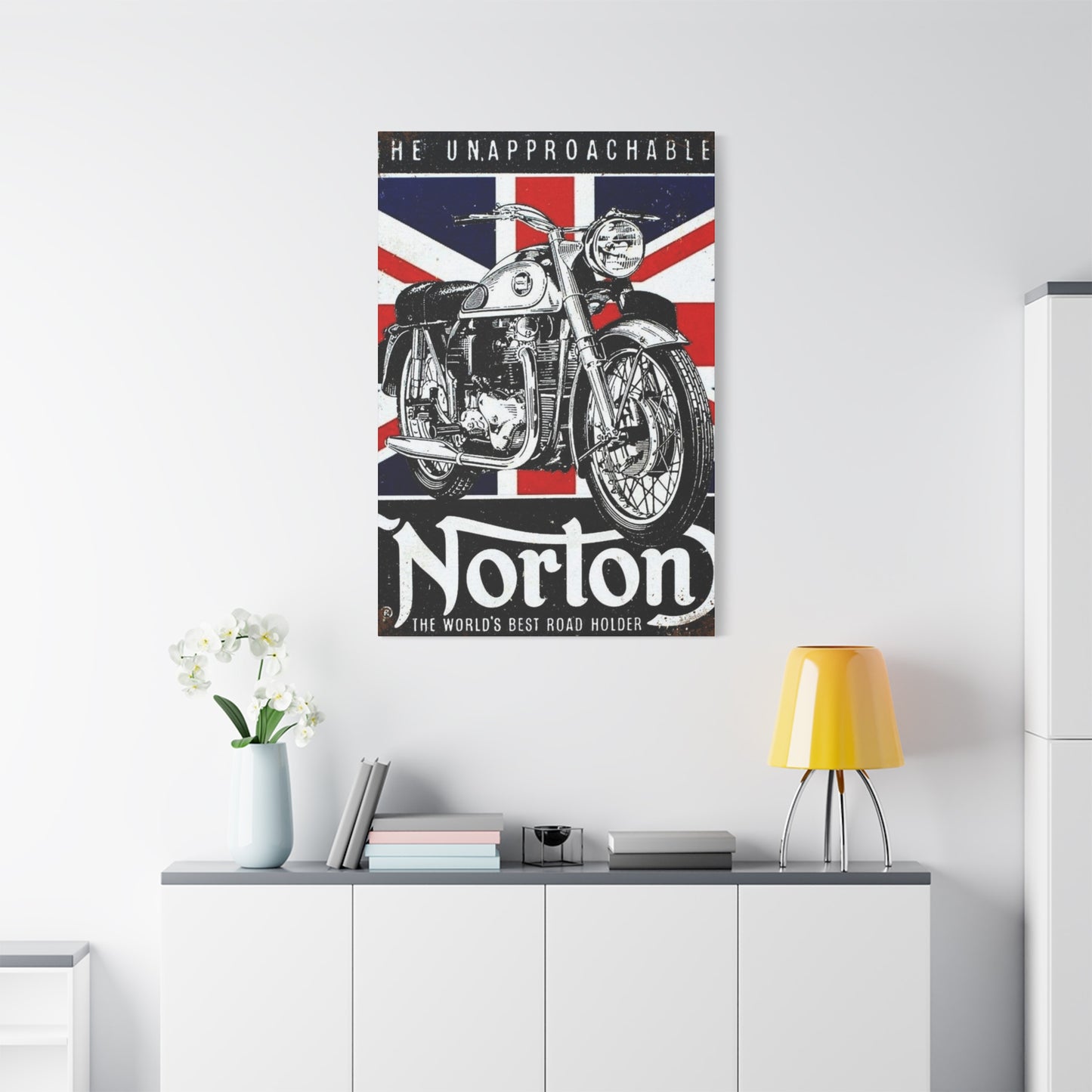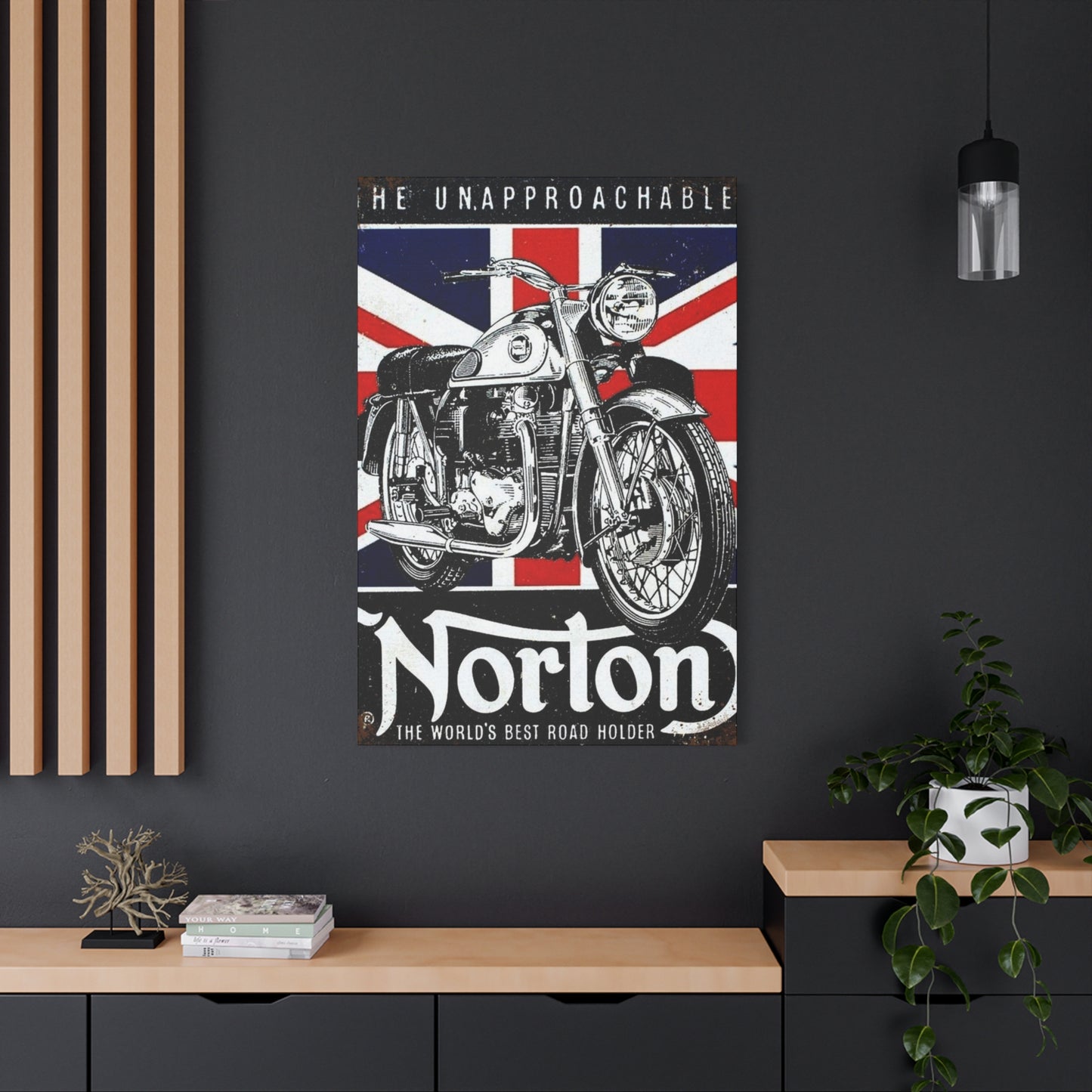Classic British Motorcycle Wall Art: Authentic Heritage Pieces for Modern Homes
Classic British motorcycle wall art represents more than decorative elements; these pieces embody decades of engineering excellence, cultural heritage, and artistic expression. From the roaring engines of Triumph motorcycles to the sleek lines of Norton bikes, British motorcycle imagery has captivated enthusiasts and art lovers worldwide. These authentic heritage pieces bring mechanical beauty and historical significance into contemporary living environments, creating focal points that celebrate both craftsmanship and design evolution.
The appeal of British motorcycle wall art extends beyond simple decoration, offering homeowners the opportunity to showcase their appreciation for mechanical innovation and timeless design. Whether displayed in living rooms, garages, or offices, these artistic representations of legendary motorcycles create conversation starters and reflect personal interests in automotive history. The rich heritage of British motorcycle manufacturing provides endless inspiration for artists and collectors, resulting in diverse collections that range from vintage advertising posters to contemporary artistic interpretations of classic models.
Enduring Charm of Vintage British Motorcycle Artwork
British motorcycle wall art possesses an enduring charm that transcends generational boundaries and appeals to diverse audiences. The aesthetic appeal of these pieces stems from their ability to capture the essence of mechanical beauty while preserving historical moments in motorcycle development. Vintage British motorcycle artwork often features iconic models like the BSA Gold Star, Triumph Bonneville, and Norton Commando, each representing specific eras of innovation and design excellence.
The artistic representation of these legendary machines goes beyond mere documentation, transforming mechanical subjects into compelling visual narratives. Artists have long been fascinated by the curves, chrome details, and engineering precision visible in British motorcycles, translating these elements into artwork that celebrates both form and function. The timeless appeal lies in the perfect balance between industrial strength and elegant design, qualities that continue to resonate with contemporary audiences.
Modern interpretations of vintage British motorcycle themes maintain authenticity while incorporating contemporary artistic techniques and materials. Digital artists create stunning renditions of classic models, while traditional painters continue to explore the interplay of light and shadow on polished chrome and leather surfaces. Photography-based artwork captures the raw beauty of restored machines, preserving details that might otherwise be lost to time.
The emotional connection viewers develop with British motorcycle wall art often stems from personal memories, family history, or aspirational desires related to motorcycle ownership and adventure. These pieces evoke feelings of freedom, rebellion, and craftsmanship that defined the golden age of British motorcycle manufacturing. The nostalgic elements present in vintage motorcycle artwork create bridges between past and present, allowing modern viewers to connect with historical periods through visual representation.
Collectors particularly value authentic vintage posters and advertisements from British motorcycle manufacturers, as these pieces represent original marketing materials that have gained significant historical importance. Original racing posters, dealer advertisements, and promotional materials from companies like Triumph, BSA, and Norton have become highly sought-after collectibles that combine artistic merit with historical documentation.
Selecting Ideal British Motorcycle Prints for Your Environment
Choosing the perfect British motorcycle print requires careful consideration of multiple factors, including room size, lighting conditions, existing decor themes, and personal preferences. The selection process should begin with an assessment of available wall area and the desired visual impact. Large-scale prints work exceptionally well as statement pieces in spacious rooms, while smaller prints can be grouped together to create compelling gallery walls that tell comprehensive stories about British motorcycle history.
Color coordination plays a crucial role in selecting appropriate motorcycle prints. Many classic British motorcycle artworks feature rich, warm tones including deep reds, forest greens, and golden yellows that complement traditional and contemporary color schemes. Black and white photography or monochromatic prints offer versatility and can integrate seamlessly into modern minimalist environments while maintaining the powerful visual impact of motorcycle imagery.
The subject matter within British motorcycle prints varies significantly, ranging from individual motorcycle portraits to action scenes featuring riders in motion. Studio-style photographs highlighting specific models allow viewers to appreciate engineering details and design elements, while dynamic racing scenes capture the excitement and energy associated with motorcycle culture. Historical context should also influence selection, with some collectors preferring prints that document specific racing events, manufacturing milestones, or cultural moments in British motorcycle history.
Print quality and production methods significantly impact both visual appeal and longevity. High-quality digital prints on archival paper maintain color accuracy and resist fading over time, ensuring that investment in motorcycle artwork provides long-term satisfaction. Canvas prints offer texture and depth that enhance the tactile appeal of motorcycle imagery, while metal prints provide modern alternatives that emphasize the industrial nature of motorcycle subjects.
Authenticity verification becomes important when selecting vintage or reproduction prints. Original advertising posters, racing programs, and manufacturer promotional materials carry premium value and historical significance that reproductions cannot match. However, high-quality reproductions make classic British motorcycle imagery accessible to broader audiences while preserving original materials from damage caused by display and handling.
Framing considerations should complement both the artwork and the intended display environment. Traditional wooden frames work well with vintage-style prints and classical room decor, while contemporary metal or acrylic frames enhance modern interpretations of motorcycle themes. Matting choices can dramatically affect the visual presentation, with neutral colors allowing the artwork to dominate while colored mats can either harmonize with or contrast against the print colors.
Size proportions should relate appropriately to the display location and surrounding furniture. Oversized prints require adequate viewing distance to be properly appreciated, while smaller prints work well in intimate settings or as components of larger gallery arrangements. Consider the relationship between print dimensions and wall proportions to achieve balanced visual composition.
Legendary British Motorcycles Depicted in Artistic Works
British motorcycle manufacturers have produced numerous legendary models that frequently appear in wall art, each representing specific periods of innovation and cultural significance. The Triumph Bonneville, perhaps the most recognizable British motorcycle, appears in countless artistic interpretations ranging from technical illustrations to abstract representations. Its distinctive parallel-twin engine configuration and classic proportions have made it a favorite subject for artists seeking to capture the essence of British motorcycle design.
The BSA Gold Star holds legendary status among motorcycle enthusiasts and frequently features in vintage racing posters and contemporary artwork. This single-cylinder machine dominated clubman racing during the 1950s and 1960s, earning a reputation for performance and reliability that continues to inspire artists today. Artistic representations of the Gold Star often emphasize its purposeful design and racing heritage through dynamic compositions and period-appropriate styling.
Norton motorcycles, particularly the Commando and Manx models, represent another pillar of British motorcycle heritage regularly featured in wall art. The Norton Manx, with its distinctive featherbed frame and racing pedigree, appears frequently in artwork celebrating the golden age of motorcycle racing. Artists appreciate the flowing lines of Norton designs and often highlight the engineering innovations that made these machines competitive on racetracks worldwide.
Vincent motorcycles, though produced in smaller numbers, have achieved almost mythical status and appear prominently in collector-quality artwork. The Vincent Black Shadow and Black Lightning models represent the pinnacle of British motorcycle engineering and are often portrayed in artwork that emphasizes their sophisticated engineering and distinctive appearance. The complex engine architecture and unique styling elements of Vincent motorcycles provide rich material for detailed artistic interpretation.
Velocette motorcycles contribute another dimension to British motorcycle wall art, with models like the Thruxton and Venom appearing in both vintage advertisements and contemporary artistic works. These machines represent the smaller, specialized manufacturers that contributed to the diversity and character of British motorcycle production. Artists often focus on the craftsmanship and attention to detail that characterized Velocette production.
Royal Enfield motorcycles, with their long production history and distinctive character, appear frequently in artwork that spans multiple decades of British motorcycle development. From early single-cylinder models to the famous Bullet, Royal Enfield machines represent continuity and tradition in British motorcycle manufacturing. Artistic representations often emphasize the robust construction and utilitarian character that made these motorcycles popular worldwide.
The Ariel Square Four, with its unique four-cylinder engine configuration, represents innovation and engineering experimentation in British motorcycle design. This unusual machine appears in technical artwork that celebrates mechanical complexity and artistic works that highlight its distinctive appearance. The Square Four's unique sound and performance characteristics have inspired artists to create works that attempt to capture these sensory experiences visually.
Enhancing Your Living Area with Classic British Motorcycle Decorations
Integrating classic British motorcycle decorations into living areas requires thoughtful planning and attention to aesthetic harmony. These decorative elements should complement existing furnishings while adding personality and visual interest to the room. The key lies in balancing the masculine, industrial character often associated with motorcycle imagery with the comfort and warmth expected in residential environments.
Color coordination becomes essential when incorporating motorcycle artwork into established room designs. Many classic British motorcycles featured in wall art display traditional colors like British Racing Green, which coordinates beautifully with both traditional and contemporary color palettes. Deep blues, rich browns, and classic black provide neutral bases that allow motorcycle artwork to integrate seamlessly with existing furniture and accessories.
Placement strategies should consider both visual impact and practical considerations. Large motorcycle prints work exceptionally well above seating areas, creating focal points that encourage conversation and examination. Gallery walls featuring multiple smaller prints allow for comprehensive storytelling about British motorcycle history while providing flexibility in arrangement and future additions to the collection.
Lighting plays a crucial role in properly displaying motorcycle wall art. Natural light can enhance the colors and details in photographic prints but should be filtered to prevent fading and damage. Artificial lighting should be positioned to minimize glare and shadows while highlighting the key elements of each piece. Track lighting systems provide flexibility for adjusting illumination as collections grow and change.
Complementary accessories can enhance the overall impact of motorcycle decorations while maintaining aesthetic cohesion. Vintage leather goods, period-appropriate books about motorcycles, and carefully selected mechanical elements can support the motorcycle theme without overwhelming the living area. The goal is creating an environment that celebrates motorcycle culture while remaining comfortable and inviting for daily use.
Texture combinations add depth and interest to rooms featuring motorcycle wall art. The smooth surfaces typical of motorcycle imagery can be balanced with textured fabrics, natural wood elements, and varied surface treatments. Leather furniture provides natural connections to motorcycle culture while offering comfort and durability appropriate for family living areas.
Scale relationships between motorcycle artwork and room furnishings require careful consideration. Oversized prints can dominate smaller rooms, while insufficient artwork size may fail to create desired visual impact in larger areas. Consider the viewing distances from typical seating positions and ensure that artwork details can be appreciated from normal conversation distances.
Seasonal flexibility allows for periodic refreshment of motorcycle decorative themes. While permanent installations provide stability and focal points, smaller decorative elements can be changed to reflect different aspects of motorcycle culture or to accommodate other interests and occasions. This approach maintains long-term appeal while providing opportunities for creative expression.
Historical Background of Classic British Motorcycles in Artistic Expression
The history of classic British motorcycles in artistic expression parallels the development of British motorcycle manufacturing and reflects broader cultural changes in transportation, leisure, and technology. Early artistic representations of motorcycles appeared in manufacturer advertising materials, racing posters, and technical illustrations that documented engineering innovations and promoted sales. These utilitarian artworks laid the foundation for the more expressive and artistic interpretations that followed.
During the golden age of British motorcycle manufacturing, roughly from the 1920s through the 1960s, artistic representation expanded beyond commercial purposes to include fine art interpretations of motorcycle subjects. Artists began recognizing the aesthetic appeal of motorcycle design and the cultural significance of these machines in modern life. The clean lines, mechanical complexity, and speed symbolism of motorcycles provided rich material for artistic exploration.
The decline of British motorcycle manufacturing during the 1970s and 1980s created nostalgic interest in classic models and stimulated artistic revival. As original motorcycles became increasingly rare and valuable, artwork provided accessible ways for enthusiasts to celebrate and preserve motorcycle heritage. This period saw increased production of limited-edition prints, museum exhibitions, and commissioned artwork celebrating British motorcycle achievements.
Contemporary artists continue to find inspiration in classic British motorcycles, often combining traditional subjects with modern artistic techniques and materials. Digital art, mixed media compositions, and contemporary photography bring new perspectives to familiar subjects while maintaining connections to historical traditions. The enduring appeal of classic British motorcycles ensures continued artistic interest across multiple generations.
The documentation aspect of motorcycle artwork has gained historical importance as original machines and related materials become increasingly scarce. Detailed technical illustrations, cutaway drawings, and accurate color representations serve as historical records that preserve information about design details, color schemes, and construction methods. Museums and collectors value such documentation for its educational and research potential.
Racing heritage provides particularly rich material for artistic interpretation, with classic British motorcycles featuring prominently in artwork celebrating motorsport achievements. The Isle of Man TT races, Daytona competitions, and European championships generated numerous artistic works that documented specific events while celebrating the broader culture of motorcycle racing. These works capture not only the machines but also the excitement, danger, and skill associated with competitive motorcycling.
The cultural context surrounding British motorcycles has evolved significantly over time, influencing how artists approach motorcycle subjects. Early artwork emphasized utility, reliability, and technological advancement, while later interpretations explored themes of rebellion, freedom, and nostalgia. Contemporary artwork often combines multiple perspectives, acknowledging both the historical significance and the emotional appeal of classic British motorcycles.
Artistic styles applied to British motorcycle subjects have varied considerably, reflecting broader trends in art and design. Realistic technical illustration, impressionistic interpretation, abstract representation, and photographic documentation each offer different perspectives on motorcycle subjects. The diversity of artistic approaches ensures that motorcycle wall art appeals to varied tastes and decorative requirements.
Renowned Artists Specializing in British Motorcycle Paintings
Several artists have gained recognition for their specialized focus on British motorcycle subjects, developing distinctive styles and building reputations within both automotive and fine art communities. These artists bring unique perspectives to motorcycle imagery, combining technical accuracy with artistic interpretation to create compelling works that appeal to collectors and enthusiasts alike.
Technical illustrators have played crucial roles in documenting British motorcycles through detailed cutaway drawings, exploded diagrams, and precision renderings that reveal internal mechanisms and construction details. These artists combine mechanical knowledge with artistic skill to create works that serve both educational and aesthetic purposes. Their contributions preserve technical information while creating visually appealing artwork that celebrates engineering achievement.
Contemporary painters working with traditional media bring personal interpretation and emotional expression to British motorcycle subjects. Oil painters often focus on the interplay of light and shadow on polished metal surfaces, while watercolor artists explore the fluid dynamics of motion and speed. These traditional approaches create unique works that cannot be replicated through digital or photographic means.
Photography-based artists have developed sophisticated approaches to capturing the beauty and character of classic British motorcycles. Studio photographers emphasize design details and surface textures through controlled lighting and careful composition. Location photographers place motorcycles in environmental contexts that enhance their historical significance or cultural associations.
Digital artists working with computer-based tools create innovative interpretations of classic motorcycle themes while maintaining accuracy in technical details. These artists can manipulate colors, textures, and compositions in ways impossible with traditional media, often creating dramatic and eye-catching results that appeal to contemporary audiences. Digital techniques also enable the creation of limited-edition prints with exceptional color accuracy and detail reproduction.
Mixed-media artists combine multiple techniques and materials to create layered works that incorporate actual motorcycle components, vintage photographs, and traditional painting or drawing elements. These artists often explore themes related to memory, nostalgia, and the passage of time through their innovative combinations of materials and techniques.
Sculptural artists working with motorcycle themes create three-dimensional interpretations that celebrate form and movement. While not strictly wall art, relief sculptures and wall-mounted assemblages provide alternative approaches to displaying motorcycle imagery. These works often incorporate actual motorcycle parts and components, creating authentic connections to mechanical heritage.
Commission artists specializing in motorcycle subjects provide personalized artwork based on specific motorcycles owned by collectors or particular models of special significance. These artists work closely with clients to ensure accuracy in details like color schemes, modifications, and historical context. Commissioned works often achieve exceptional quality because of the personal investment and attention to detail involved in their creation.
The recognition gained by motorcycle artists has led to gallery exhibitions, museum shows, and specialized publications that celebrate their contributions to both automotive and fine art communities. This recognition helps establish market values for motorcycle artwork while encouraging continued artistic exploration of motorcycle subjects.
Creating Vintage Atmosphere with Classic British Motorcycle Posters
Vintage British motorcycle posters offer authentic ways to create atmospheric connections to historical periods while adding visual interest and cultural context to contemporary environments. These posters, whether original advertisements or high-quality reproductions, bring immediate character to rooms and establish themes that can guide other decorative choices. The key to successful integration lies in understanding the historical context and visual elements that make these posters effective decorative tools.
Original racing posters from events like the Isle of Man TT, Brooklands competitions, and European championships carry particular authenticity and historical significance. These posters feature period-appropriate typography, color schemes, and design elements that reflect the aesthetic sensibilities of their time. When displayed properly, original racing posters create immediate connections to specific moments in motorcycle racing history while adding sophisticated visual elements to modern rooms.
Manufacturer advertising posters from companies like Triumph, BSA, Norton, and Vincent represent another category of vintage materials that work exceptionally well in creating atmospheric displays. These posters showcase specific motorcycle models while incorporating the advertising aesthetics of their respective periods. The combination of product photography, persuasive text, and graphic design elements creates complex visual compositions that reward detailed examination.
Reproduction posters make vintage aesthetic accessible while preserving original materials from damage caused by display and handling. High-quality reproductions maintain the color accuracy and detail resolution necessary for effective display while offering affordable alternatives to increasingly expensive original materials. Modern printing techniques can enhance certain aspects of vintage designs while maintaining their authentic character.
Grouping strategies for vintage poster displays should consider both visual harmony and historical narrative. Chronological arrangements can tell stories about motorcycle development over time, while thematic groupings might focus on specific manufacturers, racing events, or motorcycle categories. Mixed arrangements combining different types of posters can create dynamic displays that reflect the diversity of British motorcycle culture.
Framing choices significantly impact the effectiveness of vintage poster displays. Period-appropriate framing materials and styles enhance authenticity while protecting valuable materials from environmental damage. Contemporary framing approaches can provide striking contrasts that emphasize the historical nature of poster content while integrating effectively with modern room designs.
Color coordination between vintage posters and room decor requires careful attention to historical color palettes and their relationships to contemporary color schemes. Many vintage British motorcycle posters feature earth tones, deep blues, and rich reds that coordinate well with traditional and transitional decorating approaches. The aged appearance of authentic vintage materials adds warmth and character that complements natural materials and textures.
Lighting considerations for vintage poster displays should balance visibility with preservation requirements. Natural light enhances the visual impact of poster colors and details but should be filtered to prevent fading and deterioration. Artificial lighting systems should provide even illumination without creating glare or hot spots that might damage materials over time.
Optimal Color Palettes for British Motorcycle Wall Art
Color scheme selection plays a fundamental role in successfully integrating British motorcycle wall art into residential and commercial environments. The colors traditionally associated with British motorcycles provide natural starting points for room color schemes while the artistic interpretation of these subjects offers additional palette options that can complement diverse decorating approaches.
British Racing Green represents perhaps the most iconic color associated with British motorsport and appears frequently in motorcycle wall art. This deep, sophisticated green coordinates beautifully with cream, warm gray, and natural wood tones while providing sufficient contrast for effective display of motorcycle artwork. Rooms featuring British Racing Green elements create immediate connections to automotive heritage while maintaining elegant and sophisticated appearances.
Classic black remains a dominant color in motorcycle imagery and provides versatile foundations for diverse color schemes. Black motorcycle silhouettes and dramatic shadows create strong visual anchors that work effectively with both light and dark room colors. The contrast potential of black elements allows motorcycle artwork to maintain prominence regardless of surrounding color choices.
Chrome and metallic elements frequently featured in motorcycle artwork reflect surrounding colors while adding sophisticated gleam and visual interest. Rooms designed to complement metallic elements in motorcycle art often feature gray color schemes that echo the metallic surfaces while providing neutral backgrounds for artwork display. Warm grays particularly complement the golden tones often present in aged chrome and brass components.
Vintage leather colors including rich browns, warm tans, and deep burgundies appear regularly in motorcycle artwork and provide natural coordination opportunities with traditional furniture and accessories. Brown-based color schemes create warm, comfortable environments that celebrate the craftsmanship and natural materials associated with classic motorcycle culture.
Engine colors including the distinctive gold of Triumph engines, the black of Norton powerplants, and the polished aluminum of racing motors influence color palette selection for motorcycle-themed rooms. These mechanical colors can be echoed in room accessories, furniture finishes, and accent colors to create cohesive design themes that support motorcycle artwork displays.
Contemporary interpretations of motorcycle subjects often feature enhanced or stylized color palettes that expand decorating possibilities beyond historically accurate representations. Artists working with digital media can manipulate colors to create dramatic effects or to coordinate with specific room designs. These interpretative approaches allow motorcycle wall art to function effectively in diverse decorating contexts.
Monochromatic and sepia-toned motorcycle artwork provides maximum flexibility for color coordination while maintaining strong visual impact. These neutral approaches allow surrounding room colors to dominate while ensuring that motorcycle subjects remain visually prominent. Black and white photography particularly excels in contemporary room designs where color restraint is desired.
Accent color strategies can highlight specific elements within motorcycle artwork while creating connections to other room elements. Red accents might echo brake lights or racing stripes, while yellow accents could reference headlight colors or safety equipment. Strategic accent color use creates visual relationships that unify motorcycle artwork with overall room designs.
Integrating British Motorcycle Art with Industrial Design Elements
The natural affinity between British motorcycle imagery and industrial design elements creates opportunities for sophisticated decorative schemes that celebrate manufacturing heritage and mechanical aesthetics. This integration requires understanding the visual and conceptual connections between motorcycle subjects and industrial design principles while maintaining comfortable and functional living environments.
Raw materials commonly featured in industrial design, including exposed steel, weathered wood, and concrete surfaces, provide natural complements to the mechanical subjects depicted in motorcycle wall art. These materials echo the industrial origins of motorcycle manufacturing while creating textural contrast that enhances the visual impact of artwork displays. The key lies in balancing industrial elements with softer materials that maintain residential comfort.
Exposed structural elements like steel beams, pipe work, and mechanical fixtures create architectural contexts that support motorcycle artwork themes. When these elements are present in converted warehouses, lofts, or modern industrial-style homes, motorcycle wall art integrates seamlessly while reinforcing the overall design aesthetic. Original architectural features provide authentic industrial character that complements motorcycle subjects.
Vintage industrial furniture pieces including factory tables, metal storage units, and utilitarian seating options coordinate naturally with British motorcycle wall art. These functional pieces often feature the same attention to durability and straightforward design that characterized classic motorcycle engineering. The visual relationships between industrial furniture and motorcycle imagery create cohesive decorative themes.
Lighting fixtures designed with industrial aesthetics, such as exposed bulb pendants, metal task lights, and warehouse-style fixtures, enhance the display of motorcycle artwork while supporting overall design themes. Industrial lighting often provides the direct illumination needed for effective artwork viewing while maintaining consistency with decorative approaches that celebrate manufacturing heritage.
Color coordination between industrial elements and motorcycle artwork requires attention to the natural patinas and surface treatments that develop on metal objects over time. Weathered steel, aged brass, and oxidized copper surfaces provide rich color palettes that complement the earth tones and metallic elements frequently featured in British motorcycle art. These natural aging processes create sophisticated color relationships that cannot be replicated through artificial means.
Contrast strategies using industrial elements can highlight specific aspects of motorcycle artwork while creating dynamic visual relationships. Smooth motorcycle surfaces portrayed in artwork gain visual impact when displayed against rough industrial textures, while the precision of motorcycle engineering becomes more apparent when contrasted with the utilitarian character of industrial fixtures and furniture.
Scale relationships between industrial elements and motorcycle artwork require careful consideration to maintain appropriate visual balance. Large-scale industrial features can overwhelm smaller motorcycle prints, while insufficient industrial presence may fail to support the thematic connections desired in integrated design schemes. Consider the proportional relationships between all elements to achieve harmonious compositions.
Authentic industrial elements including vintage factory equipment, machinery components, and manufacturing tools can serve as three-dimensional complements to two-dimensional motorcycle artwork. These objects provide tactile experiences and historical connections that enhance the overall impact of motorcycle-themed decorative schemes while maintaining authentic connections to manufacturing heritage.
Professional Framing and Display Techniques for Classic Motorcycle Prints
Professional framing and display techniques significantly impact both the visual effectiveness and long-term preservation of classic motorcycle prints. These techniques involve material selection, construction methods, and installation approaches that protect valuable artwork while optimizing its aesthetic presentation. Understanding professional standards helps ensure that investments in motorcycle wall art provide maximum satisfaction and longevity.
Matting selection serves multiple functional and aesthetic purposes in motorcycle print framing. Acid-free mat boards prevent chemical damage to artwork over time while providing visual separation between prints and glass surfaces. Mat color choices influence how viewers perceive artwork colors and can either harmonize with or provide contrast to print colors. Neutral colors typically work best for motorcycle artwork, allowing the subjects to dominate visual attention.
Glass options for framing motorcycle prints include regular glass, acrylic alternatives, and specialty products designed for artwork protection. Museum-quality glazing materials filter harmful ultraviolet light while providing maximum optical clarity. Anti-reflective treatments reduce glare problems that can interfere with artwork viewing, particularly important for prints displayed in brightly lit areas or opposite windows.
Frame material selection should consider both aesthetic compatibility and structural requirements. Wooden frames offer traditional appearance and natural coordination with room furnishings, while metal frames provide contemporary alternatives that may better complement the industrial character of motorcycle subjects. Frame proportions should relate appropriately to print dimensions and visual weight.
Conservation mounting techniques protect valuable prints from damage while allowing for future removal if necessary. Acid-free mounting boards provide stable support for prints while buffering against environmental changes. Reversible mounting methods avoid permanent adhesion that might damage original materials during future conservation efforts.
Environmental protection considerations include temperature stability, humidity control, and protection from direct sunlight exposure. Proper framing creates barriers against environmental fluctuations while maintaining optimal viewing conditions. Backing materials should provide moisture protection while allowing air circulation that prevents condensation problems.
Installation methods should ensure secure mounting while protecting both artwork and wall surfaces. Wall anchoring systems must support the combined weight of frames, glass, and prints while providing stability against accidental impact or seismic movement. Professional installation often includes protective padding and security features that prevent theft or damage.
Group display techniques for multiple motorcycle prints require planning for visual harmony and proper spacing relationships. Grid arrangements provide formal structure suitable for series or collections, while asymmetrical arrangements can create dynamic compositions that accommodate prints of varying sizes. Sight line considerations ensure that all pieces can be viewed effectively from typical viewing positions.
Lighting integration should be planned during framing to avoid conflicts between lighting fixtures and frame designs. Picture lights, track systems, and indirect lighting each offer advantages for different display situations. Light positioning should eliminate shadows and glare while providing even illumination across entire print surfaces.
Creative DIY Projects for Custom Motorcycle Wall Art
Creating custom motorcycle wall art through DIY projects offers opportunities for personal expression while developing unique pieces that cannot be purchased elsewhere. These projects range from simple assembly and framing approaches to complex artistic endeavors that require significant skill and time investment. Success depends on matching project complexity to available skills while maintaining realistic expectations about final results.
Photo compilation projects allow enthusiasts to create personalized motorcycle artwork using their own photography or collected images. Digital editing software enables color correction, composition adjustment, and artistic filtering that can transform ordinary photographs into compelling artwork. Large-format printing services make it possible to create museum-quality prints from digital files at reasonable costs.
Mixed media approaches combine photography with traditional art materials to create layered compositions that incorporate multiple visual elements. These projects might include actual motorcycle components, vintage documents, maps showing motorcycle routes, or other materials with personal significance. The combination of two-dimensional and three-dimensional elements creates depth and interest that purely photographic approaches cannot achieve.
Stencil projects using motorcycle silhouettes or design elements can create dramatic wall art through direct application of paint or other materials to wall surfaces. These approaches work particularly well for garage or workshop environments where permanent wall decoration is acceptable. Stencil techniques can also be applied to canvas or wood surfaces for portable artwork creation.
Vintage poster reproduction projects involve researching historical motorcycle advertisements, racing posters, or promotional materials and recreating them through digital or traditional printing methods. These projects provide opportunities to learn about motorcycle history while creating authentic-looking decorative pieces. Attention to period-appropriate typography, color schemes, and design elements ensures effective results.
Mechanical component art projects incorporate actual motorcycle parts into wall-mounted displays that celebrate mechanical beauty through three-dimensional presentation. Polished engine components, vintage gauges, or classic headlights can be mounted and illuminated to create functional art pieces that serve as both decoration and conversation starters. These projects require attention to mounting methods that ensure safety while highlighting component beauty.
Custom framing projects allow for creative interpretation of standard framing approaches while potentially reducing costs compared to professional services. Learning basic matting and frame construction techniques opens possibilities for unique treatments that complement specific motorcycle subjects or room designs. However, valuable artwork should still receive professional treatment to ensure proper preservation.
Digital art projects using computer software provide unlimited creative possibilities for motorcycle artwork creation. Vector graphics programs enable precise technical illustration, while image editing software supports artistic manipulation of photographic content. These approaches require computer skills but offer exceptional flexibility and the ability to create unlimited copies of finished works.
Collaborative projects involving multiple family members or friends can create meaningful artwork while providing shared creative experiences. Group projects might involve each participant contributing elements to composite works or creating coordinated series that tell comprehensive stories about motorcycle experiences or interests.
Symbolic Meaning of British Motorcycles in Wall Decoration
British motorcycles carry rich symbolic associations that extend far beyond their mechanical functions, making them particularly meaningful subjects for wall decoration. These machines represent concepts of freedom, craftsmanship, heritage, and adventure that resonate deeply with contemporary audiences seeking to express personal values and interests through their living environments. Understanding these symbolic dimensions enhances the effectiveness of motorcycle wall art in creating meaningful decorative statements.
Freedom symbolism connects strongly with motorcycle imagery, representing liberation from conventional transportation constraints and social expectations. The open road represents possibility and adventure, while the motorcycle serves as the vehicle for personal exploration and self-discovery. Wall art featuring motorcycles often evokes these themes of independence and personal agency, appealing to viewers who value autonomy and unconventional approaches to life.
Craftsmanship symbolism celebrates the skilled trades and artisanal approaches that characterized British motorcycle manufacturing. In an era of mass production and disposable goods, classic motorcycles represent attention to detail, quality materials, and construction methods that prioritized durability over cost efficiency. Displaying motorcycle artwork communicates appreciation for traditional skills and values quality over convenience.
Heritage and tradition find expression through British motorcycle imagery that connects viewers to historical periods and cultural movements. These machines represent continuity with past generations while preserving memories of different approaches to transportation and leisure. The nostalgic elements in motorcycle wall art allow contemporary viewers to maintain connections with historical periods that may seem more authentic or meaningful than current experiences.
Adventure and exploration symbolism emerges from the association of motorcycles with travel, discovery, and risk-taking. The compact nature of motorcycles enables access to remote locations and spontaneous journey changes that larger vehicles cannot match. Wall art featuring motorcycles often suggests willingness to embrace uncertainty and seek experiences beyond routine daily activities.
Rebellion and nonconformity themes connect motorcycles with countercultural movements and rejection of mainstream social expectations. From early motorcycle clubs to contemporary biker culture, motorcycles have served as symbols of resistance to conventional authority and lifestyle expectations. This rebellious symbolism appeals to viewers who identify with alternative perspectives and independent thinking.
Mechanical appreciation represents growing nostalgia for times when individuals could understand and repair their own transportation equipment. Classic motorcycles embodied accessible technology that encouraged personal involvement and modification. Displaying motorcycle artwork often expresses frustration with contemporary technology complexity and longing for more direct relationships with mechanical objects.
Gender expression and identity themes have evolved significantly in motorcycle culture, with contemporary motorcycle wall art reflecting changing perspectives about who participates in motorcycle activities. Modern motorcycle artwork increasingly features diverse riders and celebrates varied approaches to motorcycle enthusiasm beyond traditional masculine stereotypes.
Cultural identity connections link British motorcycles with specific national and regional characteristics including engineering excellence, design sophistication, and competitive spirit. These associations allow viewers to express connections with British culture or appreciation for international diversity through their decorative choices.
Classic British Motorcycle Wall Art as Thoughtful Gifts for Enthusiasts
Classic British motorcycle wall art represents exceptionally thoughtful gift options for enthusiasts, combining aesthetic appeal with personal significance that demonstrates understanding of recipient interests and values. These gifts work effectively for various occasions including birthdays, holidays, retirement celebrations, and milestone achievements while providing lasting reminders of thoughtfulness and consideration.
Gift selection strategies should consider recipient knowledge levels, existing collections, and display preferences to ensure compatibility with personal tastes and living environments. Novice enthusiasts might appreciate general motorcycle imagery or iconic models like the Triumph Bonneville, while experienced collectors may prefer rare or specialized subjects that complement existing collections. Understanding recipient preferences prevents duplication while ensuring gift relevance.
Personalization opportunities enhance gift significance through connections to recipient experiences, interests, or aspirations. Custom artwork featuring specific motorcycle models owned by recipients creates deeply personal gifts that cannot be purchased elsewhere. Commission artists can incorporate personal elements like custom paint schemes, riding locations, or significant dates that transform general motorcycle imagery into meaningful personal statements.
Historical significance adds educational value to motorcycle wall art gifts while providing conversation starters and research opportunities. Gifts featuring specific racing events, manufacturer milestones, or technical innovations offer learning experiences that extend beyond mere decoration. Recipients often develop deeper appreciation for motorcycle history through exposure to well-chosen artwork that documents important developments.
Quality considerations become particularly important for gift purchases, as recipients will associate gift quality with the giver's regard for the relationship. Professional framing, archival materials, and recognized artists or publishers demonstrate commitment to providing lasting value. Investment in quality materials ensures that gifts provide long-term satisfaction while maintaining their appearance over time.
Presentation approaches should reflect the significance of the gift occasion while protecting artwork during transportation and initial display. Professional packaging, documentation about artists or historical context, and installation instructions demonstrate attention to detail that recipients will appreciate. Gift certificates for professional framing services can ensure proper presentation while allowing recipients to choose framing materials that coordinate with their existing decor.
Size and format considerations should account for recipient display opportunities and preferences. Large statement pieces work well for recipients with appropriate wall areas and complementary decor themes, while smaller prints or series provide flexibility for various display options. Portable formats including canvas prints or metal prints offer durability advantages for recipients who might move or rearrange displays frequently.
Occasion appropriateness influences subject matter selection and presentation approaches. Retirement gifts might emphasize leisure aspects of motorcycling, while achievement recognition could focus on competitive or technical excellence themes. Holiday gifts allow for more playful or seasonal approaches that might not be appropriate for formal recognition occasions.
Budget considerations affect quality levels and customization possibilities but should not prevent thoughtful gift selection. High-quality reproduction prints offer affordability while maintaining visual impact, and thoughtful framing choices can enhance modest purchases significantly. The key lies in maximizing perceived value through attention to recipient preferences and presentation details.
Utilizing Canvas Prints to Showcase Motorcycle Design Details
Canvas prints offer unique advantages for displaying motorcycle wall art, particularly when showcasing design details and technical elements that benefit from enhanced texture and depth perception. The fabric surface of canvas provides tactile appeal while eliminating glass reflection problems that can interfere with detail viewing. These characteristics make canvas particularly suitable for motorcycle subjects where material textures and surface treatments play important roles in visual appeal.
Technical detail reproduction through canvas printing allows viewers to appreciate engineering elements and design subtleties that might be lost in traditional photographic prints. The texture of canvas enhances the perception of metal surfaces, leather components, and mechanical details while providing sufficient resolution for close examination. High-quality canvas printing maintains color accuracy while adding dimensional qualities that complement motorcycle subjects.
Scale advantages of canvas prints enable large-format display of motorcycle details without the weight and fragility concerns associated with framed glass presentation. Large canvas prints can showcase entire motorcycles or focus on specific components like engines, fuel tanks, or wheel assemblies while maintaining wall mounting simplicity. The lightweight nature of canvas prints also provides flexibility for temporary displays or frequent rearrangement.
Color saturation characteristics of canvas printing often enhance the visual impact of motorcycle subjects by intensifying metallic elements and deepening shadow areas. The absorbent nature of canvas materials can create richer color appearances that complement the bold visual character of motorcycle imagery. However, color management becomes important to ensure accuracy in critical elements like paint schemes and chrome treatments.
Durability factors make canvas prints practical choices for environments where traditional framed artwork might be vulnerable to damage. Garage displays, workshop areas, and high-traffic locations benefit from the resilience of canvas materials while maintaining professional appearance standards. Canvas prints resist moisture and temperature fluctuations better than paper-based materials while remaining easy to clean and maintain.
Conclusion
Classic British motorcycle wall art offers an authentic celebration of heritage, craftsmanship, and timeless design that resonates deeply with enthusiasts and collectors alike. These artworks capture the essence of iconic British motorcycles—symbols of engineering excellence, cultural influence, and rebellious spirit—bringing a powerful dose of nostalgia and style into modern homes. Whether displayed in a living room, garage, or study, classic motorcycle art connects the past with the present, honoring a rich legacy while enhancing contemporary décor.
The appeal of British motorcycle art lies in its ability to tell stories through intricate details and dynamic compositions. From vintage Triumphs and Nortons to legendary Royal Enfields, these pieces celebrate the sleek lines, mechanical beauty, and adventurous spirit that have defined British motorcycling for generations. Artists use a variety of techniques, from photorealistic painting to minimalist line art, to showcase the motorcycles’ unique character and enduring appeal.
In terms of design, classic British motorcycle wall art seamlessly fits into a variety of interior styles, including industrial, vintage, rustic, and modern. Its bold imagery and often monochromatic or muted color palettes make it versatile for creating striking focal points or complementing a collection of automotive memorabilia. Framing choices and placement can further emphasize the artwork’s rugged elegance and heritage value.
Moreover, incorporating classic British motorcycle art into your home décor goes beyond aesthetic appreciation—it reflects a passion for craftsmanship, freedom, and a storied motorcycling culture. It inspires conversations, evokes memories, and brings a sense of identity and personality to your living space.
In conclusion, classic British motorcycle wall art is a timeless and authentic way to infuse your modern home with heritage and character. It celebrates the artistry and legacy of British motorcycling while offering versatile, stylish décor that appeals to both aficionados and casual admirers. By choosing these heritage pieces, you create a dynamic environment where tradition meets contemporary design, fueling inspiration and admiration every day.

















